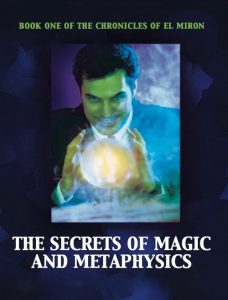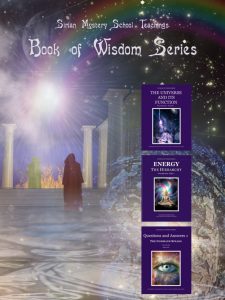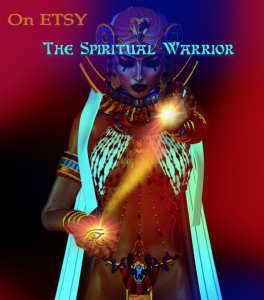 The ultimate purpose of the Tarot is to be used as a metaphysical guide through your physical life, but the soul must have awakened before the value of the Tarot’s archetypal energies as they flow through you, can be fully appreciated. It is imperative to understand yourself in all aspects to allow your function to be fulfilled while you are upon the earth plane. To understand your characteristic traits and talents is to begin to understand your destiny. Working with the Tarot will help you to understand the archetypal energies that are constantly flowing through you, and which ones are influencing you at the present time. All cards pulled serve a learning purpose, and are therefore benevolent, even seemingly negative cards may be showing you the way to deal with a sticky situation.
The ultimate purpose of the Tarot is to be used as a metaphysical guide through your physical life, but the soul must have awakened before the value of the Tarot’s archetypal energies as they flow through you, can be fully appreciated. It is imperative to understand yourself in all aspects to allow your function to be fulfilled while you are upon the earth plane. To understand your characteristic traits and talents is to begin to understand your destiny. Working with the Tarot will help you to understand the archetypal energies that are constantly flowing through you, and which ones are influencing you at the present time. All cards pulled serve a learning purpose, and are therefore benevolent, even seemingly negative cards may be showing you the way to deal with a sticky situation.
Since all confusion is the result of ignorance, the Tarot seeks to answer those questions by turning you back on yourself with more questions. Since the answer to any question is always sought within the question itself. This why serious students will always consider tarot as a metaphysical guide along the many pathways to self-mastery.
All fate is the result of the thoughts that are the roots of your character. Change your thinking and you can change your destiny. “Know thyself” was a maxim given by the ancients so humankind could become wise and master their own destinies, but many do not want to know themselves; they are quite content to plod along buffeted by the winds of fate. Free will becomes a gift when you understand that you create your own destiny by your own thoughts and emotions. Otherwise fate will become your teacher and put you in positions that will ensure you learn certain lessons, whether you think you need them or not. The winds of fate will be caused to blow from your negative thought processes, in an effort to give you the clues you need to make the necessary adjustments. As you gain in understanding, you can avoid much of the negative conditioning and use the positive aspects to enjoy a life of happiness.
The Tarot has been with us since the dawn of time in one form or another as it is a pictorial representation of the journey back to the Godhead, using the analogy of the four elements in conjunction with the Kabbalah. We can see this even in religious ceremonies today.
For example, on the first card, the Magician, we see depicted the four elements, in the form of the sword, the wand, the cup and the coin resting on a table. If you look at the symbology depicted in some churches today, you will see something similar. It only takes a little bit of imagination to come up with the analogy. The cards are simply used to show the many blessings and pitfalls along the way. The blessings can be enjoyed; the pitfalls can either be avoided if you have your wits and understanding about you, or grin and bear it if you can’t. The four elements represent the Tetragrammaton, which is representative of the secret name of the being who ensouls our planet and works with the interactions of those four sacred elements.
There are various cards that can help you on your journey and these are your Personality Card and your Soul Card.
Your personality card can be ascertained by adding up the numbers of your birthdate one under the other. First the date, then the month and finally the year; then add all the numbers together. Remember there are only 22 major arcana cards, so keep any number that appears up to the number 22. This is your personality card. If you have double digits add them together to get your soul number. For example if your personality number is 13 (Death) which means transformation, then your soul number is 4 (Emperor) the male principle inside you. This means you are learning to transform from a perhaps a rather normal type personality to a personality that is ready to take control of your life by balancing the four elements within you by your own power and divine authority. So use the tarot as a metaphysical guide to assist you on your journey back to the Source.
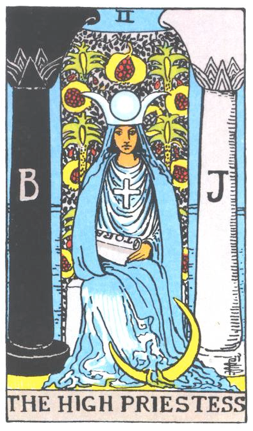 Here, we are not interested in the fortune telling aspect of the Tarot, we are interested in the inner or spiritual significance which pertains to the Path of Initiation as represented by the twenty two Major Arcana cards that contain the wisdom of the Tarot.
Here, we are not interested in the fortune telling aspect of the Tarot, we are interested in the inner or spiritual significance which pertains to the Path of Initiation as represented by the twenty two Major Arcana cards that contain the wisdom of the Tarot. The study of the Tarot in an esoteric sense will lead you through one of the doorways to the mysteries of life. The Tarot has been with us since the dawn of time in one form or another as it is a pictorial representation of the journey back to the Godhead. And we can see this even in many religious ceremonies today. For example, on the first card, the Magician, we see depicted the four elements, in the form of the sword, the wand, the cup and the coin resting on a table. If you look at the symbology depicted in some churches today, you will see something similar. It takes only a little bit of thinking to come up with the analogy. The cards are simply used to show the many blessings and pitfalls along the way. And as you work your way through each impression of the card, you will experience the energies associated with the archetype that the card represents.
The study of the Tarot in an esoteric sense will lead you through one of the doorways to the mysteries of life. The Tarot has been with us since the dawn of time in one form or another as it is a pictorial representation of the journey back to the Godhead. And we can see this even in many religious ceremonies today. For example, on the first card, the Magician, we see depicted the four elements, in the form of the sword, the wand, the cup and the coin resting on a table. If you look at the symbology depicted in some churches today, you will see something similar. It takes only a little bit of thinking to come up with the analogy. The cards are simply used to show the many blessings and pitfalls along the way. And as you work your way through each impression of the card, you will experience the energies associated with the archetype that the card represents.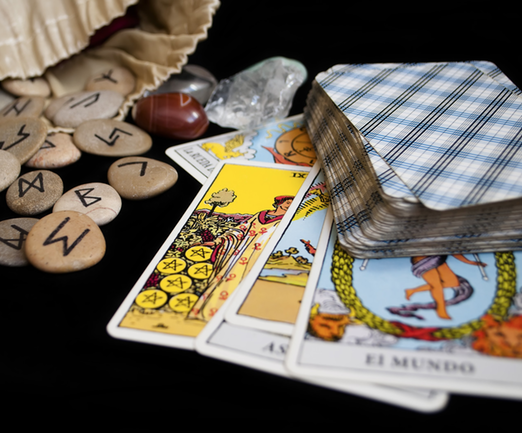 An Egyptian High Priest, Hermes Trismegistos, probably one of the greatest initiates that walked the earth before Christ, left for humanity the Book of Wisdom entitled “Thoth” or the Emerald Tablet of Hermes, containing some of the highest wisdom that has ever been left on our planet. His Hermestablet or Tabula Smaragdina, from which comes the saying, “That which is above is also that which is below,” serves to prove the macrocosmic and microcosmic laws of analogy. These teachings are termed Hermetic Science by those who have studied them and have been initiated into them. Originally, this Book of Wisdom was composed of 78 slabs which later become known as the 78 Tarot cards we have today because of the genius of one of the Masters of wisdom who had the ability to inspire his earthly disciple. The meaning behind these Tarot cards became corrupted over time and although they were used in card games, what better way of keeping the ancient wisdom before the public eye? Much has been said about the history of Tarot, but this information comes straight from the Master R.
An Egyptian High Priest, Hermes Trismegistos, probably one of the greatest initiates that walked the earth before Christ, left for humanity the Book of Wisdom entitled “Thoth” or the Emerald Tablet of Hermes, containing some of the highest wisdom that has ever been left on our planet. His Hermestablet or Tabula Smaragdina, from which comes the saying, “That which is above is also that which is below,” serves to prove the macrocosmic and microcosmic laws of analogy. These teachings are termed Hermetic Science by those who have studied them and have been initiated into them. Originally, this Book of Wisdom was composed of 78 slabs which later become known as the 78 Tarot cards we have today because of the genius of one of the Masters of wisdom who had the ability to inspire his earthly disciple. The meaning behind these Tarot cards became corrupted over time and although they were used in card games, what better way of keeping the ancient wisdom before the public eye? Much has been said about the history of Tarot, but this information comes straight from the Master R.